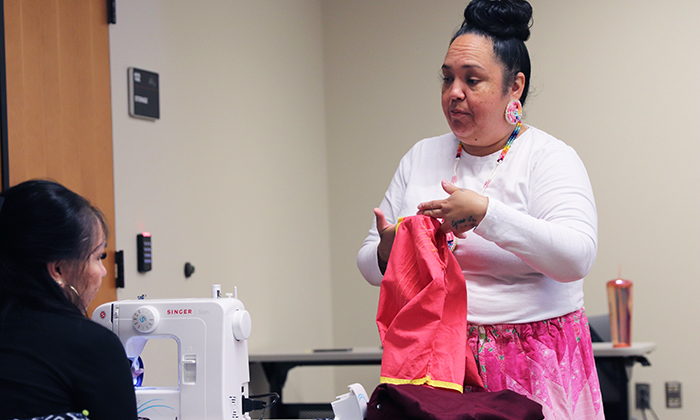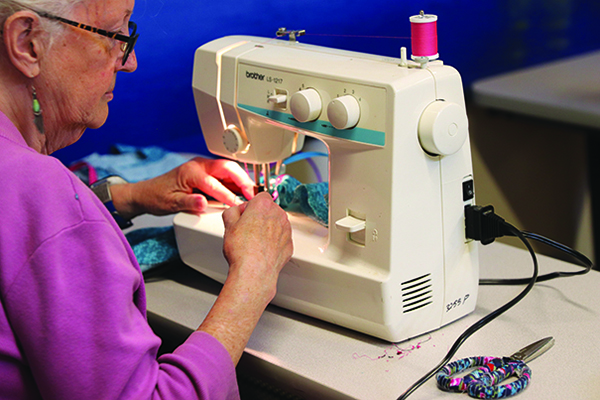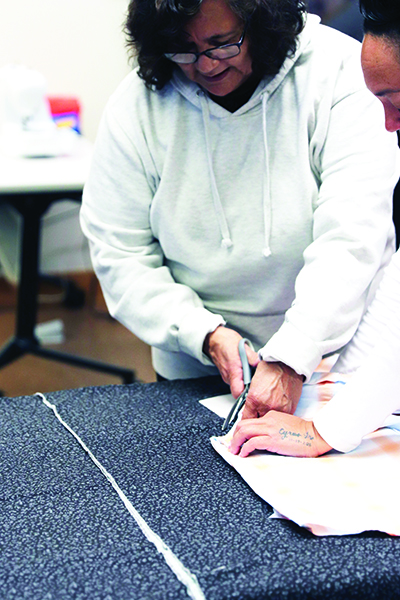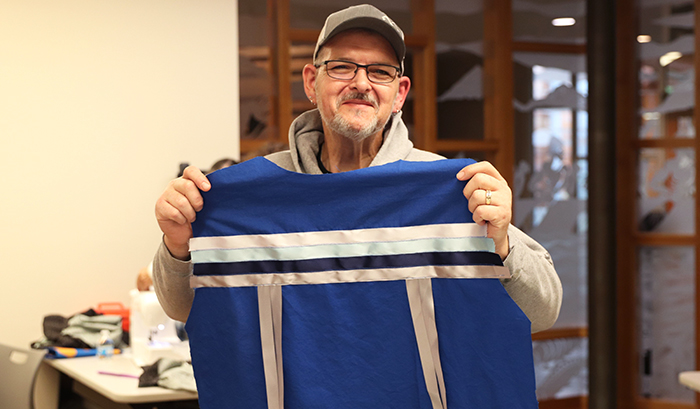
By Wade Sheldon, Tulalip News
On a cozy, rainy Saturday afternoon, June 15, the Hibulb Cultural Center was alive with a shared sense of creativity. The unique ribbon shirt class, led by the renowned Tulalip artist Winona Shopbell-Fryberg, brought together a diverse crowd. From the Sauk-Suattle Reservation to local enthusiasts, everyone was united in their eagerness to delve into the art of creating their ribbon shirts.
The ribbon shirt, whose origins are deeply rooted in the Great Lakes and throughout the Prairie, Plains, and Northeast tribes, carries a profound historical significance. Shopbell-Fryberg explained, “These shirts were created as replacements for war shirts when there was a shortage of hides to make them.”

Following the French Revolution, extravagant clothing decorated with ribbons went out of style and was exported to the Americas. There, the French traded silk ribbons along with metal for knives and cookware, bells, small mirrors, glass and brass beads, guns, alcohol, and wool blankets to the Native Americans in the latter part of the 18th century. By the 19th century, Europeans noticed that many tribes had incorporated ribbon work applique into their culture.
Shopbell-Fryberg is widely recognized as a respected cultural leader. She is revered for her exceptional beadwork on earrings and medallions and her expertise in creating ribbon skirts. Her classes offer invaluable guidance to those looking to acquire these skills, and given the success of her second ribbon shirt class, it’s evident that her teachings are highly sought after.

“I’m self-taught in making ribbon shirts,” Shopbell-Fryberg said. “My son needed a shirt, so instead of finding a pattern, I used one of his existing shirts to create my design. I have been teaching various classes for over ten years. This is my second ribbon shirt class, and I would like to teach more classes if there is a demand.”
Her hands-on teaching approach effectively demonstrates simplified methods for creating ribbon shirts. Anyone with basic sewing machine skills can quickly master these methods. By breaking down the project into manageable steps, she instills confidence in individuals with limited sewing experience, showing them they can achieve success.

One of those who was there to learn a new skill was Tulalip tribal member Bryce Carpenter-Juneau, who said, “It was easier than I thought. I was nervous about the sewing going into it because my wife usually sews. So, I figured I would try to learn myself. That way, I could help her out in a pinch. I enjoyed the class, and instead of just purchasing a ribbon shirt, I thought it would mean more to make one myself, knowing my sweat went into it. I would definitely retake this class.”
“I made a ribbon shirt about 20 years ago,” said Hermina O-Raven from Sauk-Suattle. “I like this style because you can use anybody’s shirt as an outline instead of buying a pattern. I enjoyed the class, but we always want it to be longer. I couldn’t finish my shirt, but with the start I got from the class, I will be able to finish it at home.”
As the afternoon concluded, participants left the Hibulb Cultural Center with new ribbon shirts and a deeper connection to their heritage.
For more information on workshops and other events at Hibulb, visit their website at www.hibulbculturalcenter.org.